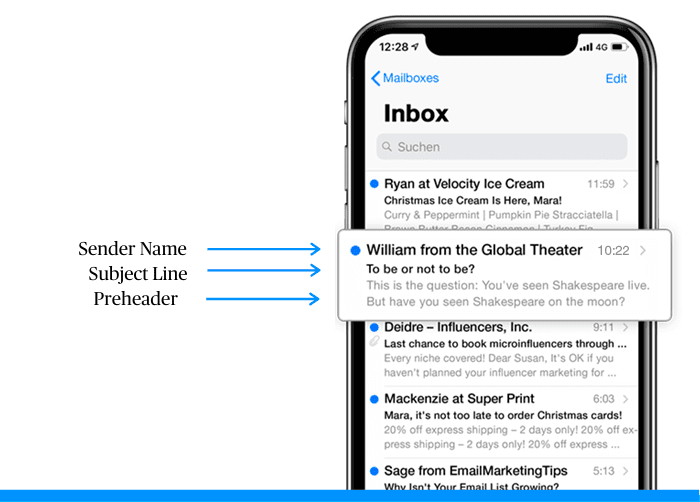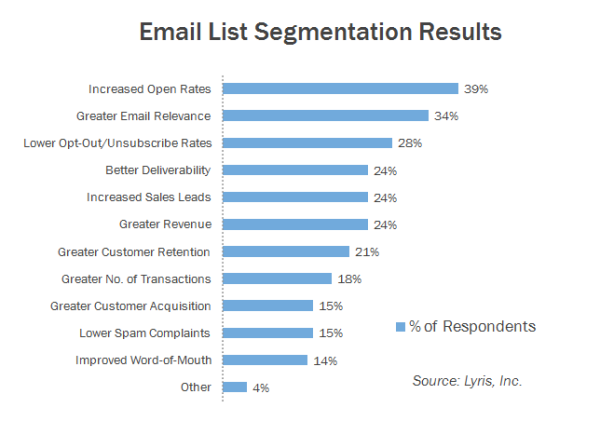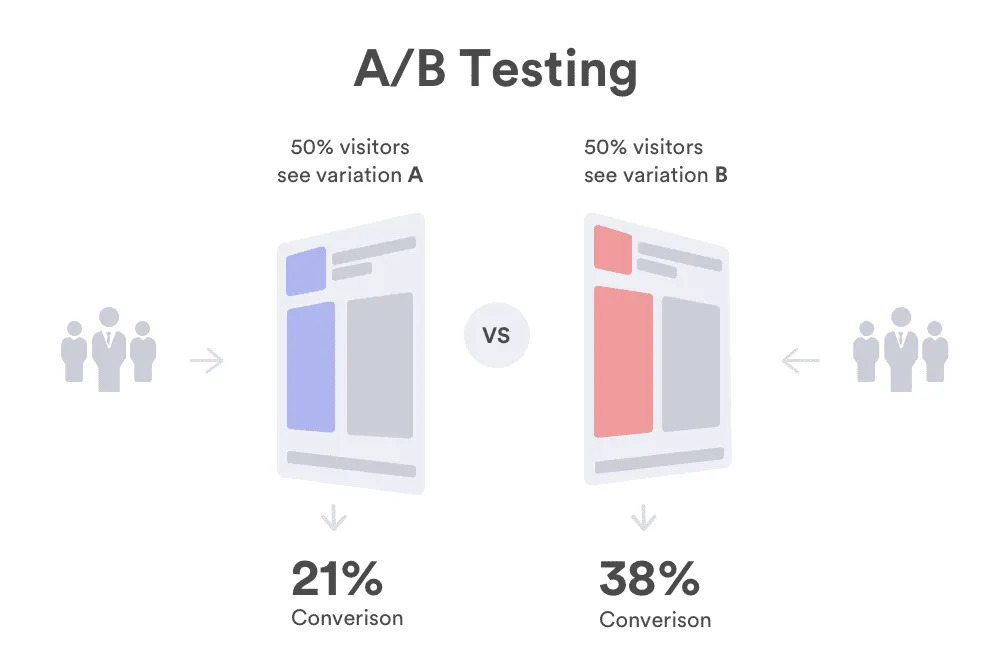Email marketing has been a foundation for companies and organizations trying to engage with their audience in the current digital era. However, it’s more important than ever to make sure your emails are getting opened and read due to the overwhelming number of emails customers receive every day.
You’ll need to think creatively and use a variety of strategies if you want to raise the open rates of your emails. This is where this guide comes in; we’ve put together a thorough list of best practices and ideas to assist you in upping your email marketing game and increasing open rates.
It’s important that you monitor your open rates if your company uses emails to promote its products and services. After all, this metric is crucial to the success of your advertising.
Luckily, we’ll go through everything in this article, from creating intriguing subject lines to segmenting your email list. By the end of this guide, you’ll be ready with a variety of useful suggestions and tactics to raise your email open rates and eventually increase audience engagement.
Why Does Your Open Rate Matter?
When it comes to email marketing, your open rate is a crucial metric that can directly impact the success of your campaign. Essentially, the open rate measures the percentage of emails delivered to your list that were actually opened by subscribers.
It’s important to note, however, that there is a distinction between open rates and click-through rates (CTR). While open rates measure how many people are actually opening your emails, CTRs measure how many people are clicking on the links within those emails.
Your email click-through rate (CTR) measures the percentage of subscribers who clicked on the links in your email against the total number of subscribers who received the email. This is an important metric to track as well, as it can give you insight into how engaging your content is and how effectively you’re driving traffic to your website or other online platforms.
10 Ways To Increase Email Open Rates
1. Create an Email List
When it comes to email marketing, the quality of your email list is far more important than the quantity. While some companies may be tempted to buy large quantities of leads in order to jump-start their marketing efforts, this approach often leads to low open rates and little engagement.
Instead, the best way to build an organic email list is by offering your audience something of value in exchange for their email address. This could be a free trial, a discount, or a free ebook .
One effective tool for building an organic email list is the use of popups. By using a popup builder like Optinmonster, you can easily create customized popups that match your brand’s style and offer visitors a clear and compelling reason to subscribe to your email list.
With a wide range of pre-made templates to choose from, creating a highly converting popup has never been easier. From simple email capture forms to more complex designs that showcase your products or services, there are endless possibilities for creating a popup that will help you grow your email list and drive engagement with your audience.
2. Pay Attention To Your Subject Line
Crafting the perfect subject line for your email can be the difference between a high open rate and a message that goes straight to the trash. That’s why it’s important to spend time and effort on getting it right.

To help you create subject lines that grab your audience’s attention, here are some tips to keep in mind:
- Keep it short and sweet: Your subject line should be no more than 50 characters, or else it may get cut off in some email clients.
- Use action-oriented language: Verbs like “Discover,” “Learn,” or “Get” can help make your subject line more compelling and encourage readers to open your message.
- Personalize when possible: Including the recipient’s name or other relevant information can help your subject line stand out in a crowded inbox.
- Create a sense of urgency: Using phrases like “Limited Time Offer” or “Last Chance” can encourage readers to act quickly and open your message.
3. Mobile Optimization
Mobile optimization refers to the process of designing and formatting your website or emails to ensure they are easily accessible and readable on mobile devices such as smartphones and tablets.
With the increasing use of mobile devices for accessing the internet, optimizing your content for mobile can have a significant impact on your open rate. Here are some reasons why:
- Mobile users prefer mobile-friendly content: Most people now use mobile devices to access the internet, and they prefer to consume content that is optimized for mobile. If your website or email is not mobile-friendly, it is likely to be difficult to navigate and read, leading to a lower open rate.
- Increased visibility: Optimizing your content for mobile can also increase your visibility in search engine results pages. Google now prioritizes mobile-friendly websites in its search results, which can help increase your website traffic and open rate.
- Better email deliverability: Mobile optimization can also have a positive impact on your email deliverability. Email providers such as Gmail and Yahoo prioritize mobile-optimized emails in their inboxes, which can increase the chances of your email being opened and read.
- Higher engagement rates: Finally, mobile optimization can lead to higher engagement rates. Mobile users are more likely to share and interact with mobile-optimized content, which can help increase your open rate and ultimately drive more traffic to your website.
4. Segment Your Email List
Segmenting your email list refers to the process of dividing your email subscribers into smaller groups based on specific criteria such as demographics, behavior, or interests. By segmenting your email list, you can send targeted messages to each group, which can help increase your open rate.

Here are some reasons why:
- Personalization: When you segment your email list, you can personalize your messages for each group based on their interests, behavior, or demographics. Personalized messages are more likely to be opened and read by subscribers, leading to a higher open rate.
- Relevant content: Segmenting your email list allows you to send relevant content to each group. Sending content that is tailored to their interests or needs can improve engagement and increase the chances of your emails being opened.
- Higher engagement: When subscribers receive emails that are tailored to their interests or needs, they are more likely to engage with your content. This can lead to a higher open rate and ultimately drive more traffic to your website.
- Reduced spam complaints: When you send targeted messages to each group, you reduce the risk of subscribers marking your emails as spam. This can help improve your email deliverability and increase your open rate.
- Improved conversion rates: By sending targeted messages to each group, you can improve your conversion rates. When subscribers receive content that is relevant to their interests or needs, they are more likely to take action and convert.
5. Avoid Spam Filters
One of the biggest challenges of email marketing is ensuring that your messages make it to your subscribers’ inbox, rather than getting lost in the spam folder. But there are several steps you can take to increase your chances of avoiding the spam folder and getting your emails opened.
First and foremost, you need a good IP address and email service. Make sure you use a reputable email service provider with a good reputation to avoid being flagged as spam by internet service providers (ISPs). This will help ensure that your emails reach your subscribers’ inboxes.
Additionally, you should make sure your email template code is clean and well-structured. A cluttered or poorly formatted email can also trigger spam filters and reduce your chances of getting opened.
Consider using branding in your “from” name to help your subscribers recognize your brand and build trust. This can increase the likelihood that your emails will be opened and engaged with.
6. Create a Compelling Subject Line
Your subject line is the first impression your subscribers will have of your email. It’s important to create a compelling subject line that entices them to open and engage with your message.
Here are some tips to help you craft a subject line that stands out:
- Be clear and concise: Your subject line should accurately convey the content of your email while being concise and to the point. Avoid using vague or misleading language that could confuse or turn off your subscribers.
- Use personalization: Including your subscriber’s name in the subject line or referencing their past purchases or interactions with your brand can help make your emails feel more personalized and relevant to them.
- Use emotional triggers: People are more likely to engage with content that evokes an emotional response. Use words that create a sense of urgency, excitement, or curiosity to make your subject line more compelling.
- Offer a benefit: Highlighting a benefit or value proposition in your subject line can help entice your subscribers to open your email. Focus on how your email can help solve a problem or meet a need for your audience.
- Use humor or creativity: A subject line that stands out with a humorous or creative twist can capture your subscribers’ attention and make them more likely to open your email.
7. A/B Testing
A/B testing is a powerful tool for improving your email marketing strategy, particularly when it comes to increasing open rates. By testing different versions of your emails, you can gain insights into what resonates best with your audience and optimize your approach accordingly.

Here are some ways A/B testing can help you increase your email open rates:
- Test subject lines: One of the most important factors in whether or not someone opens your email is the subject line. By testing different subject lines, you can see which ones generate the highest open rates and use that knowledge to improve your overall email marketing strategy.
- Test send times: The time of day and day of the week when you send your emails can have a significant impact on whether or not they get opened. A/B testing different send times can help you identify the optimal schedule for your audience and increase your open rates.
- Analyze results and refine: Once you’ve conducted A/B tests, it’s important to analyze the results and use that data to refine your approach. Take note of what worked and what didn’t and use those insights to optimize your email marketing strategy moving forward.
8. Add an Unsubscribe Option
The presence of an unsubscribe button in your emails is directly related to your open rates. If recipients cannot easily find the option to unsubscribe, they may mark your email as spam, resulting in a negative impact on your open rates.
It is important to understand that unsubscribes are a natural part of email marketing, and you should not take it personally. Rather, it is important to make it easy for recipients to unsubscribe if they choose to do so.
By providing a clear and prominent unsubscribe option, you can avoid having recipients mark your email as spam and keep your open rates healthy. At the end of the day, you want to have an engaged and active email list, made up of people who want to receive your messages.
9. Clean Up Your Email List
One of the biggest misconceptions about email marketing is that a bigger email list automatically means better results. However, this is not always the case. It is more important to focus on having an engaged email list for better performance.
For example, imagine you have an email list of 8,000 subscribers, but your open rate is only 15%. This means you have an active subscriber base of roughly 1,200 people. On the other hand, if you have a list of 3,000 subscribers with an average open rate of 30%, then you have 900 active subscribers.
It’s important to remember that having a smaller email list with a higher engagement rate is ultimately more beneficial for your email marketing efforts. By regularly cleaning up your list and removing subscribers who haven’t engaged with your emails in the last six months, you can keep your list more engaged and help avoid being flagged as spam by email filters. This can help ensure that your email marketing campaigns reach a more active and interested audience.
10. Re-send Your Emails To Non-openers
A strategy that can quickly boost your email open rates is to resend your campaigns to those who didn’t open them the first time around.
Here’s how it works:
- Send your initial email campaign as usual.
- After a few days, create a new segment and add all subscribers who received the first email but didn’t open
- Resend the same campaign to this segment with a slightly different subject line.
This is a simple and effective technique that can be easily implemented using most email marketing tools, and it has the potential to double your open rates.
Of course, you don’t have to do this for every single email you send out, especially if you send a high volume of emails. Instead, reserve this strategy for your most important campaigns, such as product launches or promotional offers. By doing so, you can maximize your email engagement and ensure that your most important messages are being seen by your subscribers.
Wrap Up
After learning more about email open rates, it’s important to keep in mind that email marketing is a continuous process that demands patience and perseverance. Conducting experiments and testing different approaches can lead to better outcomes.
Each business is distinct and significant, and it’s crucial to develop your own tactics to determine the best strategy for your company. This article has provided detailed information about the various aspects of email marketing, particularly email open rates, to help you achieve success. As long as you remain committed and focused, nothing can hinder your career path




10 Simple Ways To Increase Your Email Open Rate